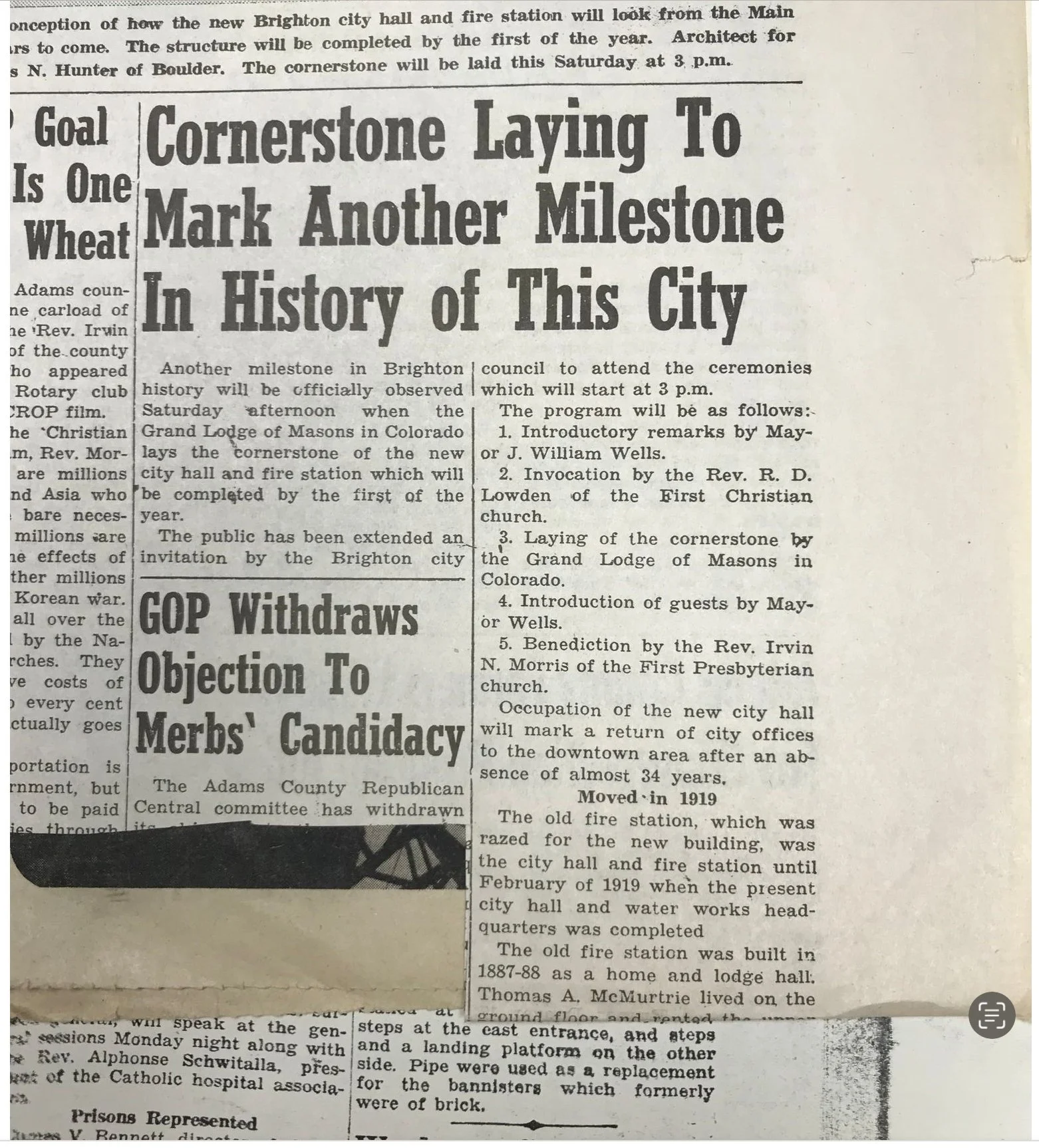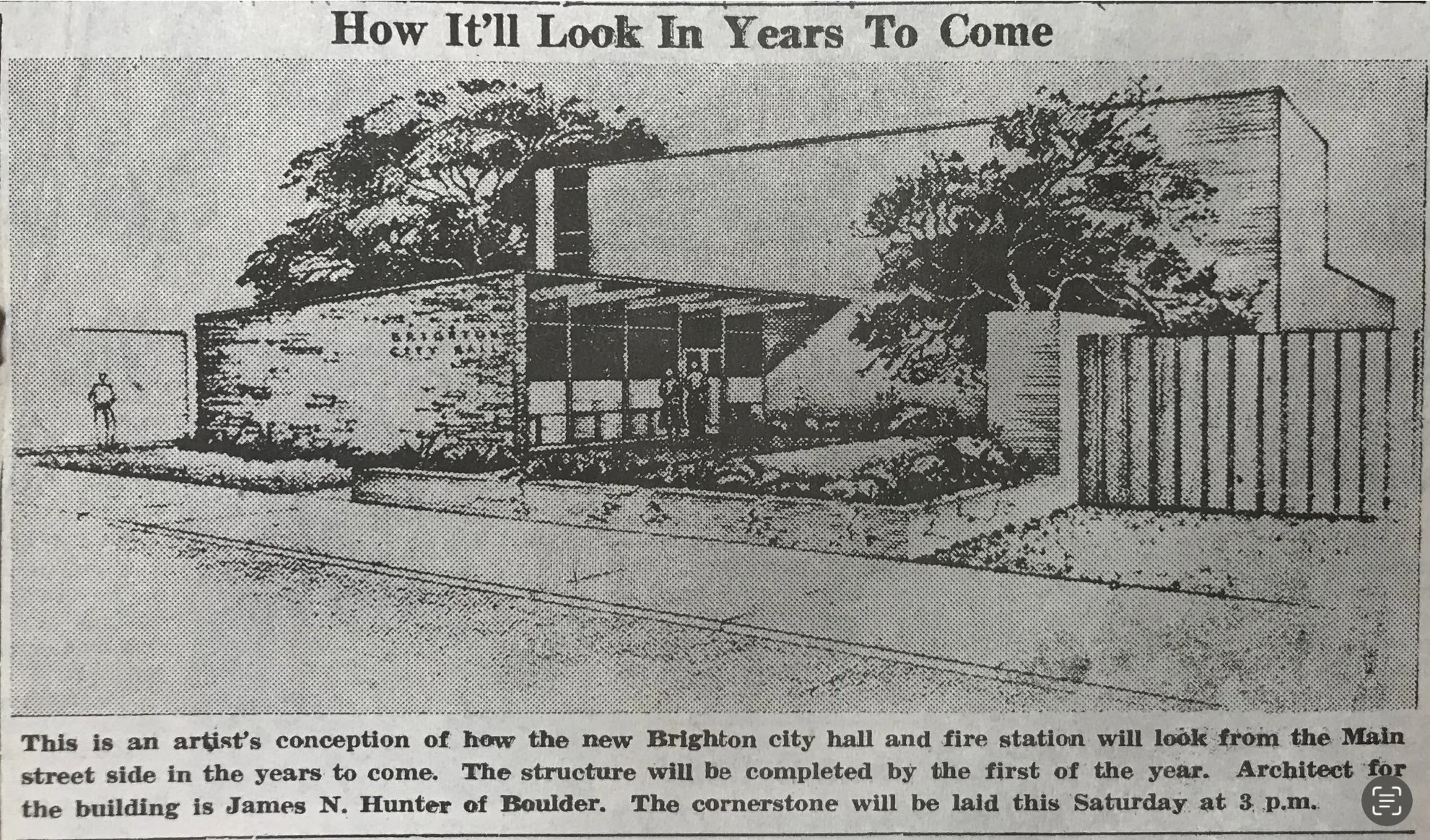
Our Story: Past, Present, and Paint
Art Lives Where History Was Made
In the heart of downtown Brighton, Colorado, the stately building at 36 S. Main Street stands as a testament to mid-century American architectural ambition and civic pride. Rising from the ashes of the old fire department in 1953, this remarkable structure began its life as Brighton's Municipal Hall, designed by the visionary Boulder architect James N. Hunter in the distinctive Usonian style—a revolutionary architectural movement championed by Frank Lloyd Wright that sought to capture the democratic spirit and pioneering essence of America's "New World" philosophy.
The building's birth was marked by extraordinary community celebration. In 1952, members of Brighton's Masonic lodge donated the cornerstone and presided over its ceremonial laying with great fanfare and civic pageantry. Hidden within that cornerstone lies a fascinating treasure: a carefully curated time capsule brimming with artifacts, documents, and memorabilia that paint a vivid portrait of Brighton life in the post-war boom of 1952—a frozen moment in time waiting to tell future generations about the hopes, dreams, and daily rhythms of a growing Colorado community.
For nearly six decades, this architectural gem served as the nerve center of Brighton's municipal operations, witnessing the town's steady transformation from a modest agricultural community into a thriving suburb. But as Brighton's population swelled and administrative needs expanded, the once-spacious halls grew cramped. In 2010, city operations reluctantly relocated to a modern facility at 501 S. 4th Street, leaving the historic building at 36 S. Main Street empty—a silent guardian of memories, awaiting its next chapter.
We're endlessly grateful to Brighton for preserving this space where history and creativity intersect daily.
Thanks to Kimberly Bauer and the Historic Preservation Center for sharing the building's fascinating history.
Distinctive Features & Creative Spaces
Judith Dickinson's gallery is in the former jail made up of two cells and exercise space. A few former inmates have dropped by to reminisce and tell their stories.
The interrogation room is now two studios with a one way mirror in between.
Jewelry is now displayed in the evidence safe which has a door a bank would envy.
Entering the back door you will find storage for the officer's guns.
There is a bullet hole in the ceiling from the accidental discharge of an officer's gun on the 2nd floor (no one was injured)
Now the color and excitement comes from the art produced in our 14 or so studios.
The Founder
Dickinson's own studio occupies the former jail's exercise area, with original cells—steel bars, stainless steel commodes and all—now storing her canvases. A two-way mirror still connects former interrogation rooms turned studios, while a bullet hole in the ceramics area ceiling bears the inscription of the officer whose "accidental discharge" created this unusual gallery feature. Even the old wall cabinets near the north entrance still advise visitors to "lock your car keys with your gun."
When artist Judith Dickinson moved to Brighton to pursue her passion full-time, she never imagined her gallery would end up in the town's former Municipal Hall—complete with jail cells turned art storage and a bank-vault-grade evidence safe now greeting visitors in the main gallery.
What started as Dickinson's Art Academy of Colorado at 24 N. Main Street caught the city's attention. Recognizing art's power to revitalize downtown, Brighton officials offered the empty historic building to Main Street Creatives as a cultural incubator—and the transformation began.
Today, Main Street Gallery houses a vibrant exhibition space, classroom, and ten artist studios ranging from cozy 200-square-foot spaces to expansive 850-square-foot havens, many boasting those coveted north-facing windows. Our community spans nationally recognized artists to passionate hobbyists, all working alongside the building's quirky historical remnants.


